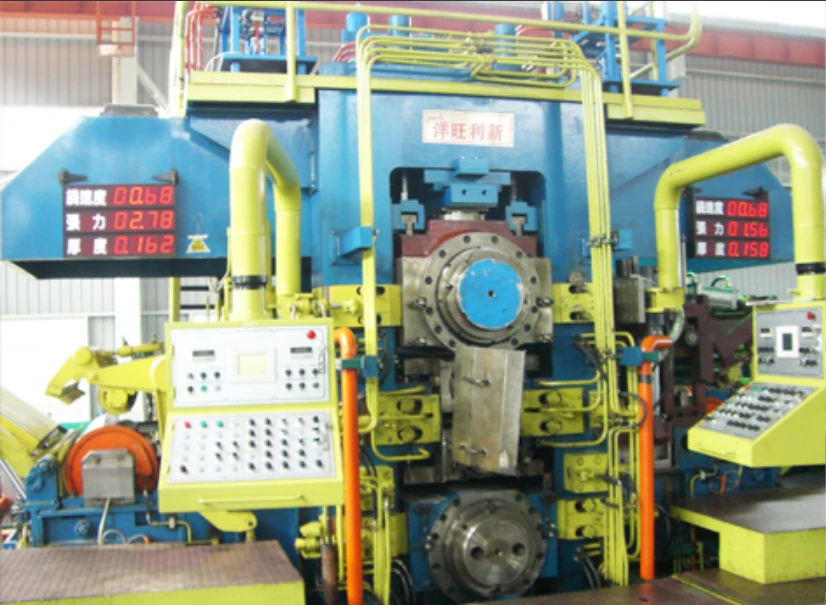
Need a Temper Rolling Mill that Delivers Flatter Steel?
Inside the modern temper rolling mill: field notes, specs, and buying signals
If you work with flat steel, you already know the quiet power of a good temper pass. To be honest, I’ve seen more production headaches solved by a well-tuned temper rolling mill than by any single downstream gadget. The Beijing-built Temper Mill from No.1518, LAR Valley Int'l, Guangwai Avenue, Xicheng District, Beijing, 100055 has been popping up in my notes lately—largely because it tackles yield-point elongation and flatness with a mix of muscle and finesse.

What it does (in real plants, on real shifts)
Core functions are straightforward: eliminate yield terraces, lift deep-draw performance, and set a reliable surface finish. In fact, the soft-reduction capability lets you nudge both thickness and mechanical properties—handy when downstream forming or painting is picky. Many customers say flatness stability after recoiling is the big win; surprisingly, surface cleanliness gains after temper pass are also noticeable when paired with proper entry cleaning.
Process flow at a glance
Typical line: entry coil → threading/weld (as needed) → pre-clean → bridle tensioning → 4‑high mill stand with precise elongation control → coolant/roll spray → exit bridle → inspection → oiling → recoiler. Materials commonly run: low-carbon CR, IF steels, HSLA, coated substrates (with care), tinplate base, and some stainless grades. Methods focus on 0.3–2.0% elongation, with roughness transfer tuned via work-roll texture (e.g., electro-discharge texturing or shot blast).
Spec snapshot (typical, real-world may vary)
| Parameter | Typical Range (≈) | Notes |
| Strip thickness | 0.18–3.0 mm | Grade-dependent |
| Max strip width | 1,250–1,850 mm | Customizable |
| Elongation setpoint | 0.3–2.0% | Closed-loop control |
| Line speed | ≈120–350 m/min | Grade/finish dependent |
| Surface roughness (Ra) | 0.4–1.6 μm | Per ISO 4287 |
Testing, standards, and real test data
Common checks: tensile per ISO 6892‑1/ASTM A370, surface roughness per ISO 4287, flatness and thickness tolerances per ASTM A568. A recent automotive coil I observed showed yield-point elongation eliminated, Δelongation +0.7% after pass, Ra moved from 0.25 to 0.9 μm, and flatness within ≤8 I-units on 1,250 mm width. Service life? The line frame is a 20+ year asset with preventative maintenance; work rolls typically cycle by wear map—call it every few shifts to weekly, depending on grade mix.
Applications and industries
Automotive exposed panels, appliance skins, drum/tinplate base, pre-painted coil, and building products. Also, light-gauge HSLA where downstream stamping needs consistency. One appliance customer told me their reject rate on orange peel dropped noticeably after a temper rolling mill upgrade with better roll-texture management. Not scientific, but it tracks with the lab data.
Customization and integration
Options include advanced AGC/AFC, tension‑leveller modules, laser or camera flatness measurement, dry/wet skin-pass modes, and quick-change work rolls. Software hooks for Level 2 quality models are increasingly standard—industry trend I fully expect to accelerate.
Vendor landscape (quick, imperfect snapshot)
| Vendor | Max Width (≈) | Automation Suite | Service Footprint | Lead Time (est.) | Certifications |
| Beijing Temper Mill | 1,850 mm | AGC/AFC, L2 data | APAC/EMEA partners | 6–10 months | ISO 9001 (typ.) |
| Primetals/SMS/Danieli (peer set) | 2,050 mm | AGC/AFC, APC | Global OEM service | 9–14 months | ISO 9001/14001 |
| Regional integrator | 1,600 mm | Basic AGC | Local only | 4–8 months | Varies |
Case notes (condensed)
Automotive service center, 1,550 mm width: post-install of a temper rolling mill, flatness claims fell by ≈40% over three months; tensile testing per ISO 6892‑1 verified consistent RP0.2 and n‑value scatter tightened by ~12%. Another site making pre-painted coil leveraged controlled Ra to lift paint adhesion (cross‑hatch per ASTM D3359) to 5B on >95% lots. Small sample size, yes, but compelling.
Why this matters now
Demand for high-appearance panels and light-gauge HSLA isn’t slowing. A capable temper rolling mill gives you predictable forming behavior and a surface your customers will stop calling you about—always the dream, right?
Authoritative citations:
1) ASTM A370 – Mechanical Testing of Steel Products.
2) ISO 6892‑1 – Metallic materials — Tensile testing.
3) ISO 4287 – Surface texture parameters.
4) ASTM A568/A568M – General requirements for steel sheet (tolerances/flatness).
-
YWLX’s 1450mm Six-Hi Reversing Mill Goes Live in BangladeshNewsNov.24,2025
-
Adjusting Roll Gap in 6Hi Reversing Cold Rolling Mill for Thin StripNewsNov.13,2025
-
Quality Control Standards for Automatic Gauge Control in Strip RollingNewsNov.13,2025
-
Effect of Skin Pass Rolling on Metal DuctilityNewsNov.13,2025
-
Key Components of a Modern TempermillNewsNov.13,2025
-
Common Wear Patterns of Work Roll in Tandem Cold Mill OperationsNewsNov.13,2025
-
Revolutionary Skin Pass Rolling Technology for Enhanced Steel QualityNewsNov.04,2025










